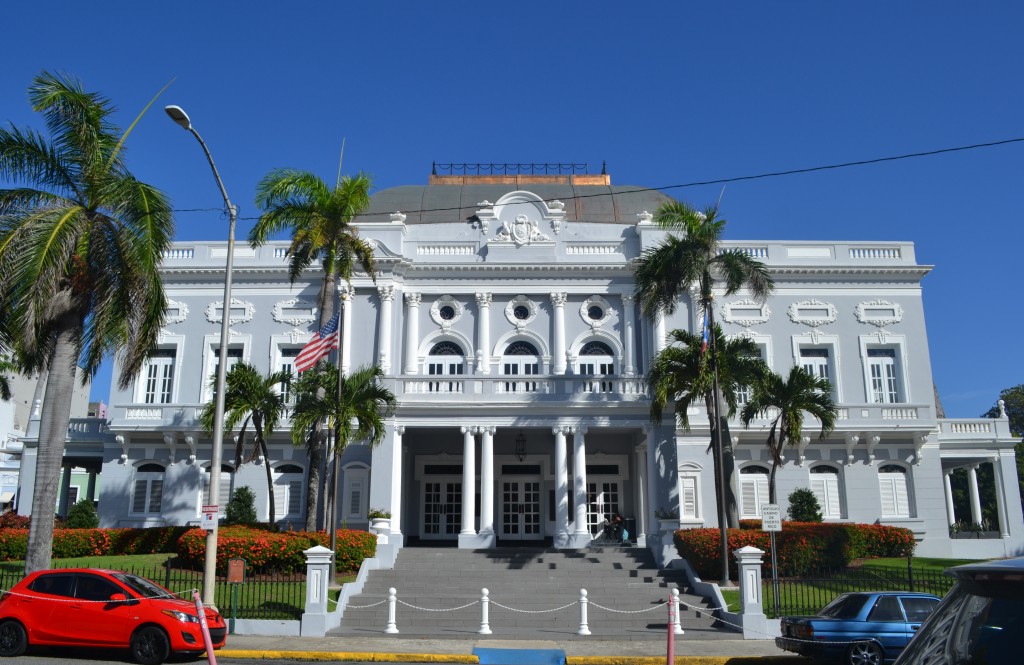
Riding the shuttle towards El Morro, I noticed a street of beautiful Spanish mansions and monuments that seemed like a great morning walk.
The next morning, I grabbed my workout clothes and shoes and headed out to a sunny day with mild temperatures. Starting at Plaza Colon (Columbus Square), I began my run heading towards the ocean until I reached San Juan’s Antiguo Casino. This statuesque Spanish and French-style marvel was built to entertain the Old San Juan’s socialites. Designed by architect Carlos del Valle, this gorgeous palace was completed in 1917 on the site of one of the original city gates, la Puerta de Santiago.
Later, the casino was converted into the Free School of Music and by 1955, the Institute of Puerto Rican Culture. With its majestic staircase and magnificent twelve-foot chandelier and stunning gardens are the property of the Government Reception Center. The location hosts corporate functions, formal weddings and festive galas.
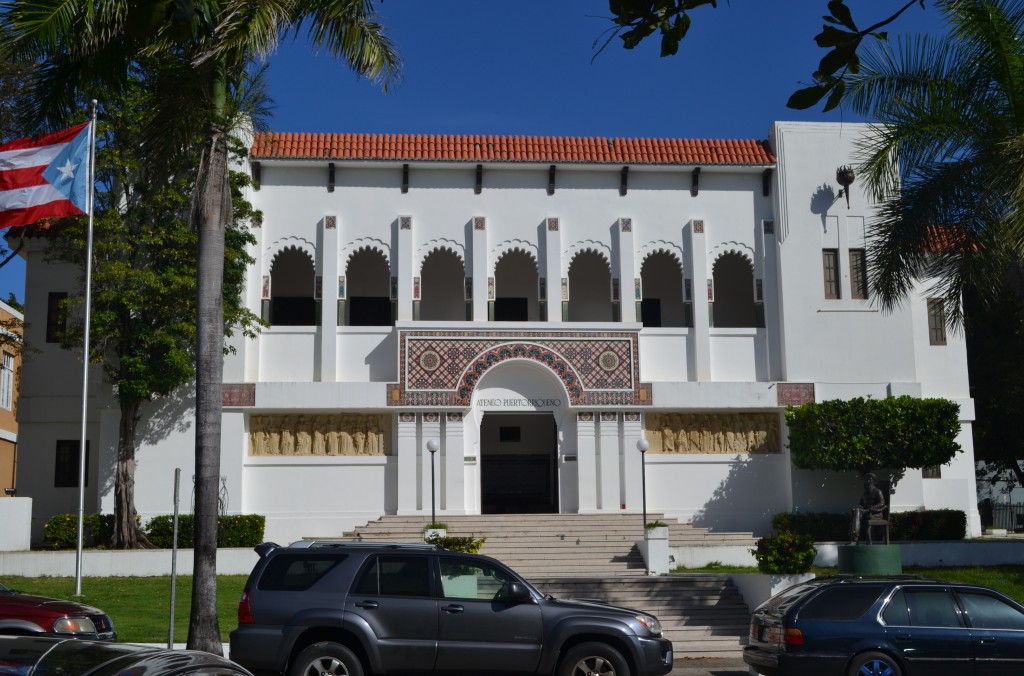
Within minutes I start my approach towards the Ateneo Puertorriqueno, Puerto Rico’s Athenaeum. While the structure was beautiful and elegant, the architecture appeared more Middle Eastern with its tile and beautiful white stucco. Built as an educational center, its primary endeavor was to provide high learning for the Puerto Rican people. Built in 1876, it now has many uses serving as a museum, performance hall, library and school.
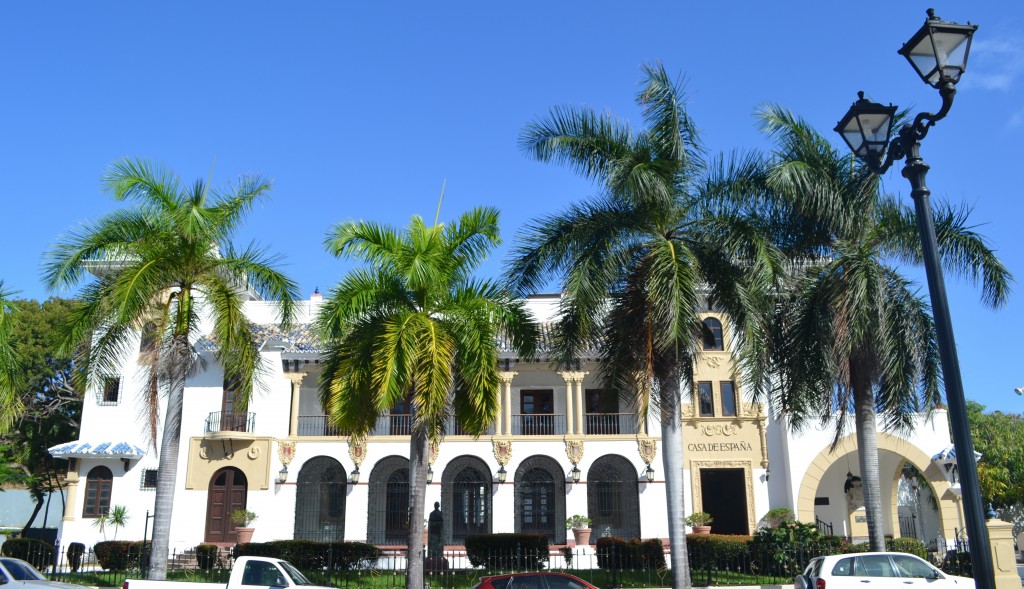
Beautiful palm trees accentuate the facade of the exquisite Casa de Espana. Looking regal with its Moorish architecture, the House of Spain was once a meeting place for Spanish Puerto Rican citizens. Inside, the two stories are decorated with multiple arches and splendid views from the upper level. Outside the plaza and its fountain are optimal for capturing photos. Bringing a bit of Spain to the island, the venue’s gorgeous interior is perfect for weddings and special occasions. 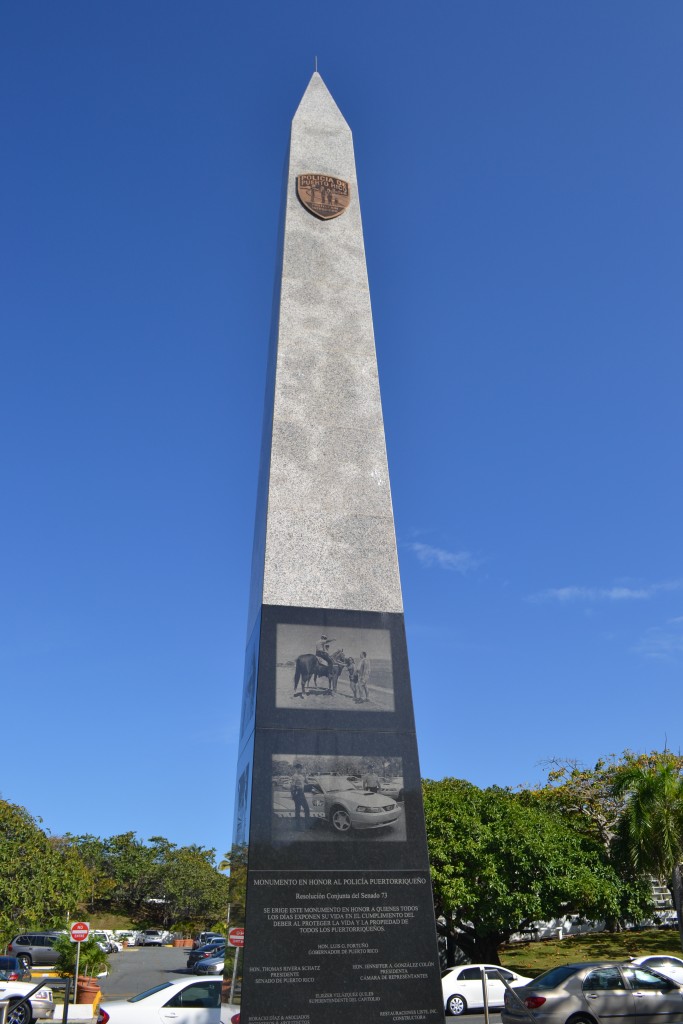
With so much to see along my run, I eventually came upon a section of monuments beginning with the Police Monument of San Juan and slowed down to check them out. The large obelisk, carved with a listing of names, honors the policemen and policewomen who have died in the line of duty while serving the island of Puerto Rico.
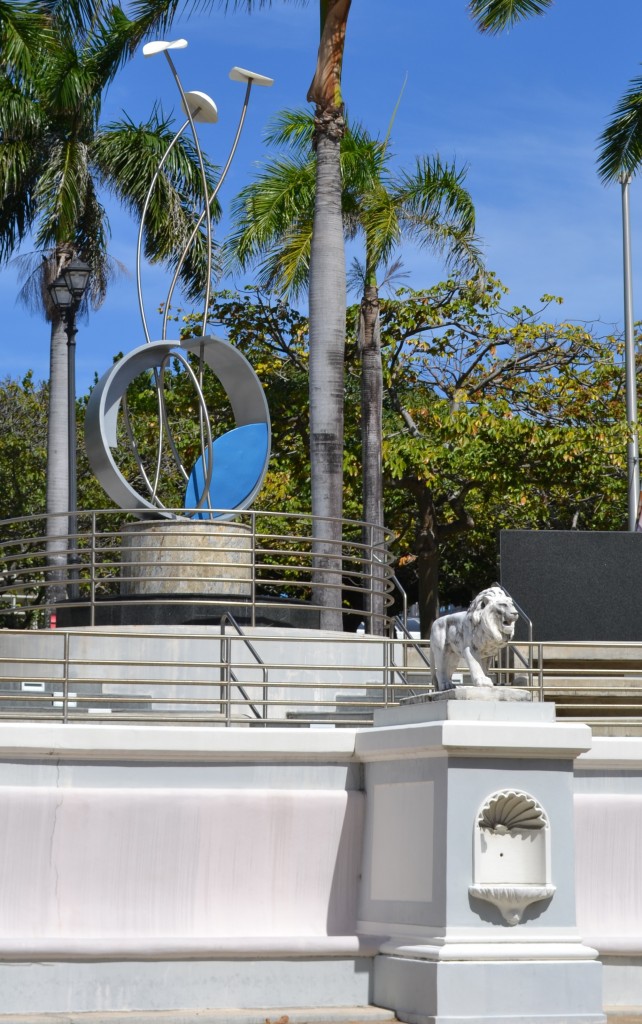
I was fascinated with the Plaza de los Leones and the regal lions that guarded the square. Not much is written about this beautiful plaza with the exception of a letter dated 1938. The note states that the “plazoleta”, having undergone restoration, had been damaged by vandals soon after the completion of the renovations. Because of the vandalism, the square was not properly inaugurated and even to this day, the site remains “under construction.”
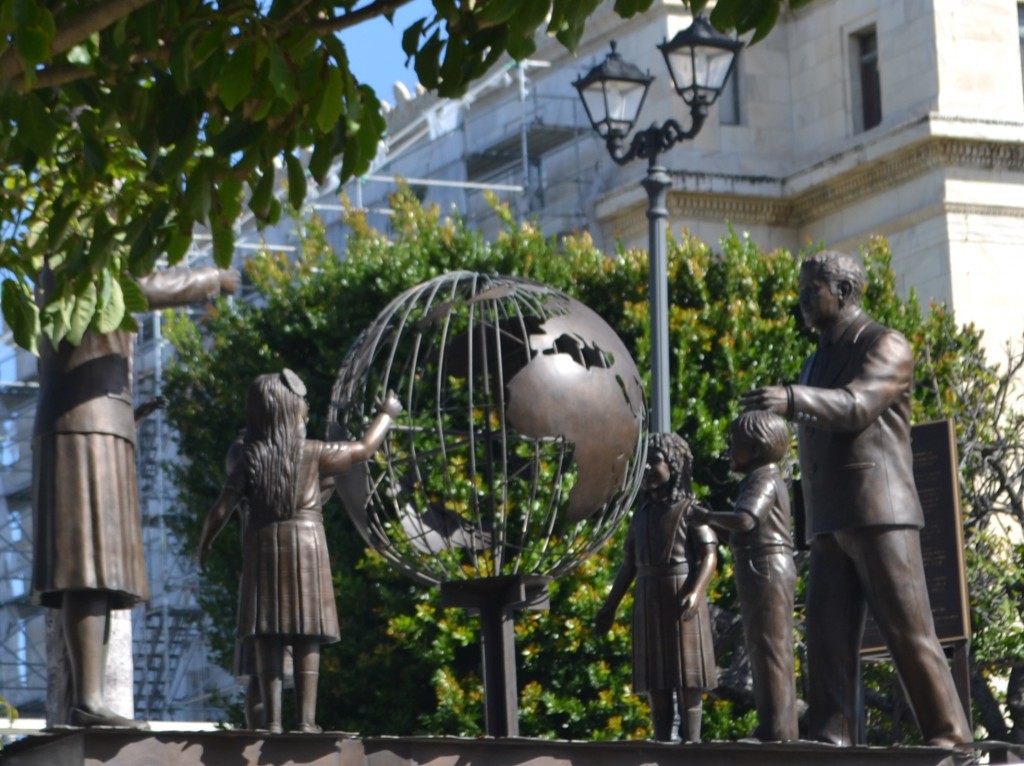
Approaching the bronze statue of the girl and the globe, I knew this beautiful sculpture somehow represented the children of the island. Dedicated to the teachers of Puerto Rico, it goes without saying that the people here are appreciative of the educators who give back to their community daily. A list of some of the most notable teachers are inscribed on this additional monument and dedication.
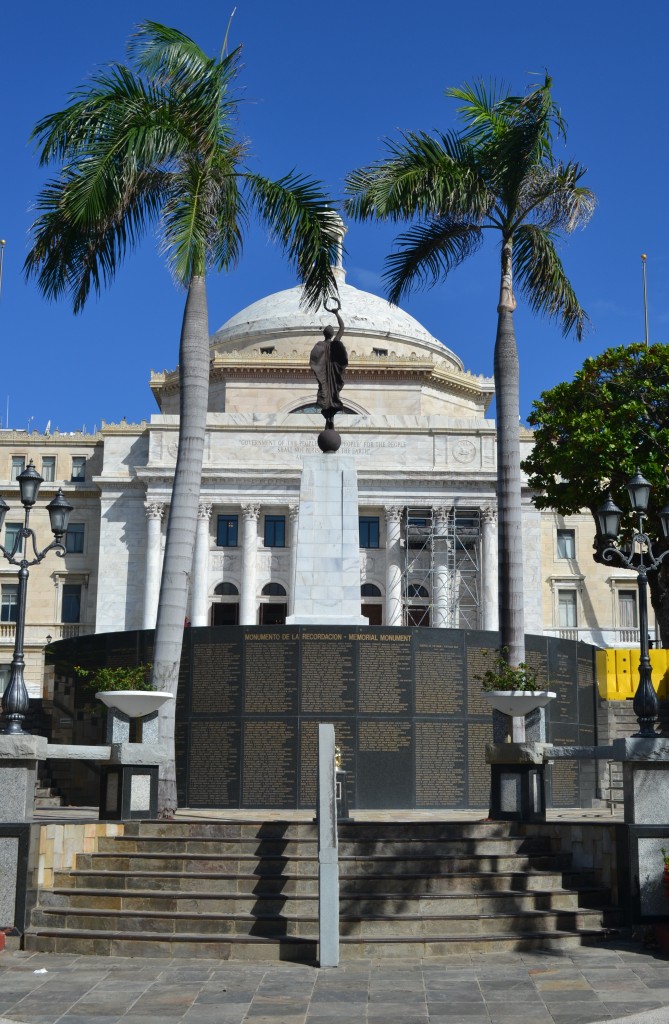
Up a set of stairs sits a granite wall surrounding a tall statue. The El Monumento de la Recordacion, or the Monument of Remembrance, recognizes the Puerto Ricans who had given their life in combat under the armed forces of the United States. The memorial was unveiled in 1996 and contains over 2,000 names.

Before reaching the Paseo de los Presidentes, I approached a stunning mural with an arbor as its backdrop. Demonstrating the history and culture of the Puerto Ricans it was one of the most ornate sculptures I had ever seen. A bronze statue, know as The altar de la Patria, took center stage.
Moving towards the coast, there were several bronze busts of past Puerto Rican governors as the grassy park extended towards the roadway. Crossing back up towards the Capitol building I eventually entered the Paseo de los Presidentes.
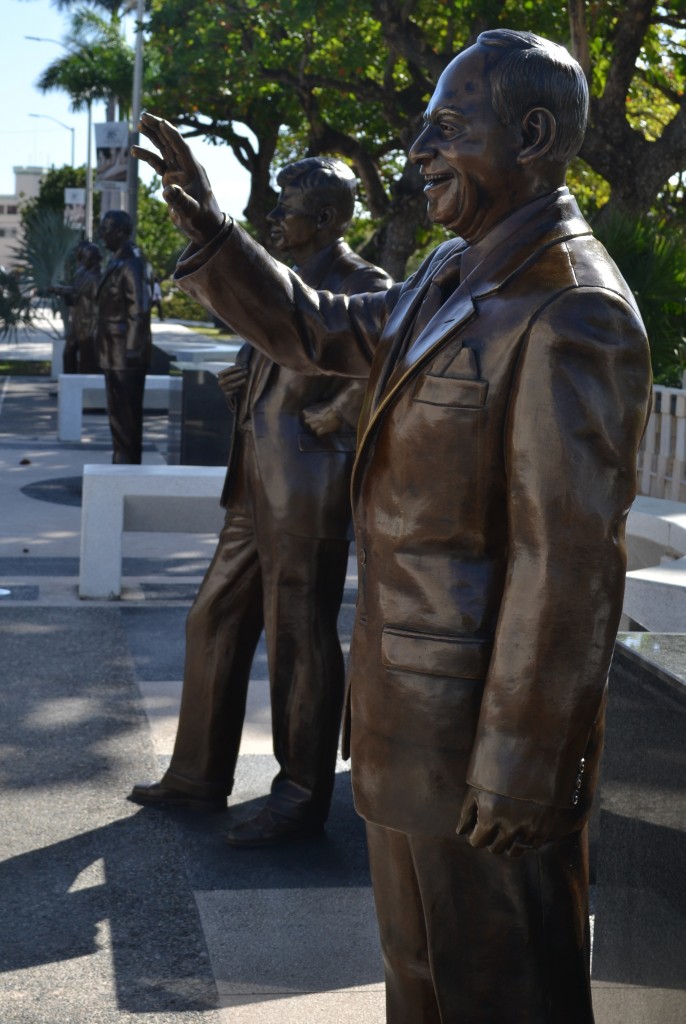
Located directly across the street from San Juan’s Capitol was a line of life-sized bronze statues. Taking a closer look, I soon realized they represented six of the US Presidents who have visited the island since the late 19th century. Bronze plaques provide a short summary of each leader’s purpose for their visit and what they had accomplished during their stay.
Before finishing my morning of exercise, I wanted to make one last stop. Heading back away from the coast and towards Columbus Square, I reached the Capitol building and decided to go inside for a quick visit.
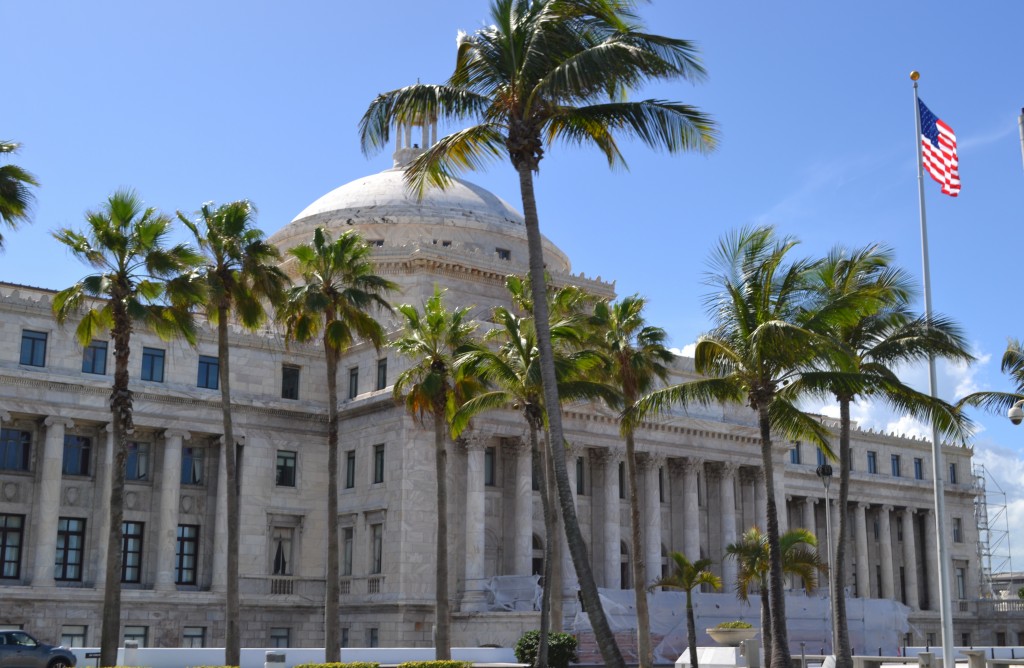
The Capitol building, more formerly known as El Capitolio de Puerto Rico is located across from the El Monumento de la Recordacion and the Paseo de los Presidentes.
I felt so small standing at the bottom of the steps looking up towards the Capitol building. I could see the security checkpoint and was a bit nervous as I climbed my way to the top.
As I approached the columned facade, I approached the opened door where two men in uniform were waiting at the entrance. While concerned that I was not dressed properly, they escorted me to the metal detector and mentioned the forum was open for visitors.
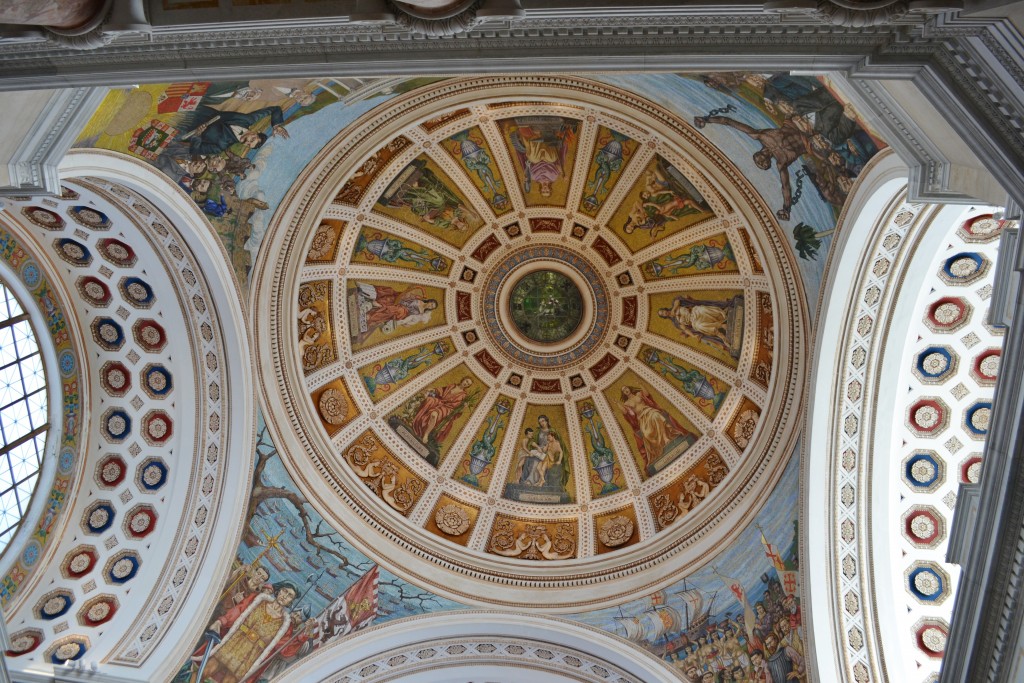
A short walk away from the security checkpoint, I was standing beneath an exquisite dome painted with local scenes. A true masterpiece of art, I could not take my eyes off of the intricate details of the stunning murals. At each corner, colorful depictions tell the story of Puerto Rico’s important historical events. One represents Columbus’ arrival to Puerto Rico, while another, the end of slavey and the end of the Spanish American War.
Before exiting the building, I happened to notice a wooden table with a glass cover at the other side of the room. Approaching the furniture piece, I could see the placard that identified the document as the Constitution of Puerto Rico.
Standing at the top of the steps, I looked out onto a more quieter San Juan, there were a few additional monuments to explore.
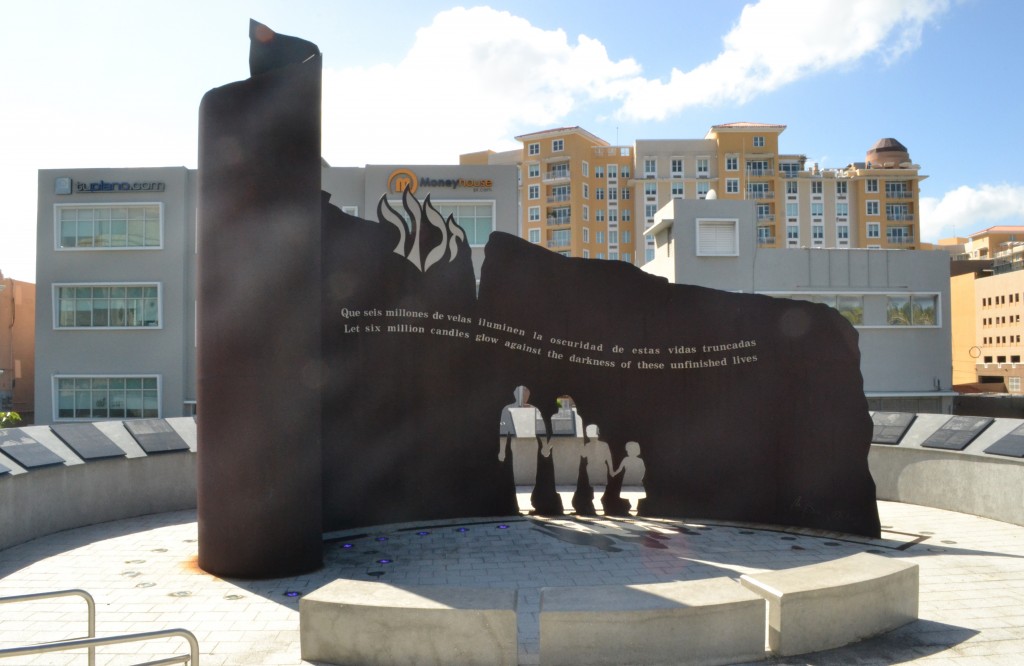
Reaching the San Juan Holocaust, I was reminded of the horrific treatment of Jews during the Second World War. Various plaques in both Spanish and English provided some of the historical facts of this atrocity. Nearby, the Path of the Righteous memorialized those who assisted the Jews and others that fell victim in the pursuit of trying to protect their Jewish friends and neighbors. Risking their lives they were true heroes and are duly honored here.
Within a few steps, I approached one of the most recent monuments dating to the late 1970s. It was here that I learned about the Lod Airport massacre where three Japanese terrorists attacked the terminal in 1972. Seventeen pilgrims from Puerto Rico lost their lives during the assault which resulted in 26 deaths and 80 injuries.
As I completed run and exploration along Constitution Avenue, I learned so much about the people and history of Puerto Rico. The highlight of my visit was the Capitol building and as I completed my morning run, I had certainly worked up an appetite. I think it’s time to continue my education of the culture of Puerto Rico and try some authentic Puerto Rican food. Next stop…..Raices!
During your travels, do you immerse yourself in the history and culture of the place you were visiting? Where was that place and what did you learn? I would love to hear your story if you would kindly leave your comments below! Many thanks for reading about our walk along the Constitution Avenue. Wishing you many Happy Travels!
What to See and What to Do:
San Juan’s Antiguo Casino
Ponce de Leon Ave and Norzagaray
San Juan, PR 00901
Telephone: 787 641 7722 (Open by appointment only)
Ateneo Puertorriqueño
Telephone: 787 721 3877 (Open by appointment only)
Casa de Espana
Ave. Constitución #9,
San Juan, PR 00901
Telephone: 939 272 4054, 787 724 1044 or 787 722 3611
(Open by appointment only)
El Capitolio de Puerto Rico
Ponce de Leon and Munoz Riviera Aves.
San Juan, PR 00901
Telephone: 787 721 5200 extension 301
- Admission Fee: Free
- Hours: Open Monday through Friday from 8:30 AM to 5 PM.
- Amenities: Tours are given in Spanish and English
- Length of Visit: 1 – 2 hours, depending on if you take the tour
- Tips for Your Visit: You will be required to pass through security to enter.
Where to Stay:
Hotel Plaza de Armas Old San Juan
202 Calle San Jose
San Juan, Puerto Rico 00901
Telephone: 787 722 9191
Amenities: Non-smoking, free continental breakfast, WiFi, refrigerator and microwave; there is a free trolley nearby at Stop #8
Where to Eat:
Raices Restaurant
#315 Recinte Sur Street
San Juan, Puerto Rico
Telephone: 787 289 2121
What to Eat:
- MOFONGO! This is absolutely my favorite dish in San Juan. Mashed fried plantains are smothered with meat and/or vegetables.
- Alcappurias are similar to fritters filled with crab, meat or lobster and dipped in a batter made from green bananas.
- Arepas de Coco is a bread made from coconut flour stuffed with meat, seafood or vegetables.
- Chicharrones de Pollo are usually served as a side dish to mofongo, these tasty pieces of chicken are seasoned with garlic, oregano and achiote.
- Chilo Frito is a fried red snapper served with fried plantains or french fries on the side.
- Lechon is a suckling pig cooked whole and prepared juicy on the inside and crispy on the outside.
- Pastelon: San Juan’s answer to lasagna made with plantains instead of pasta
- The Pina Colada was invented at Barrachina in Old San Juan.
What to Read:
- The Rum Diary by Hunter S. Thompson
- The House on the Lagoon by Rosario Ferre
- Simone by Eduardo Lalo
- Mundo Cruel by Luis Negron
- La Llamarada by Enrique Laguerre
- Song of the Simple Truth by Julia de Burgos
Photo Guide for San Juan, Puerto Rico:
- La Perla in Old San Juan for its colorful umbrellas
- The cobblestone streets and colorful buildings of Old San Juan
- The Forts in Old San Juan
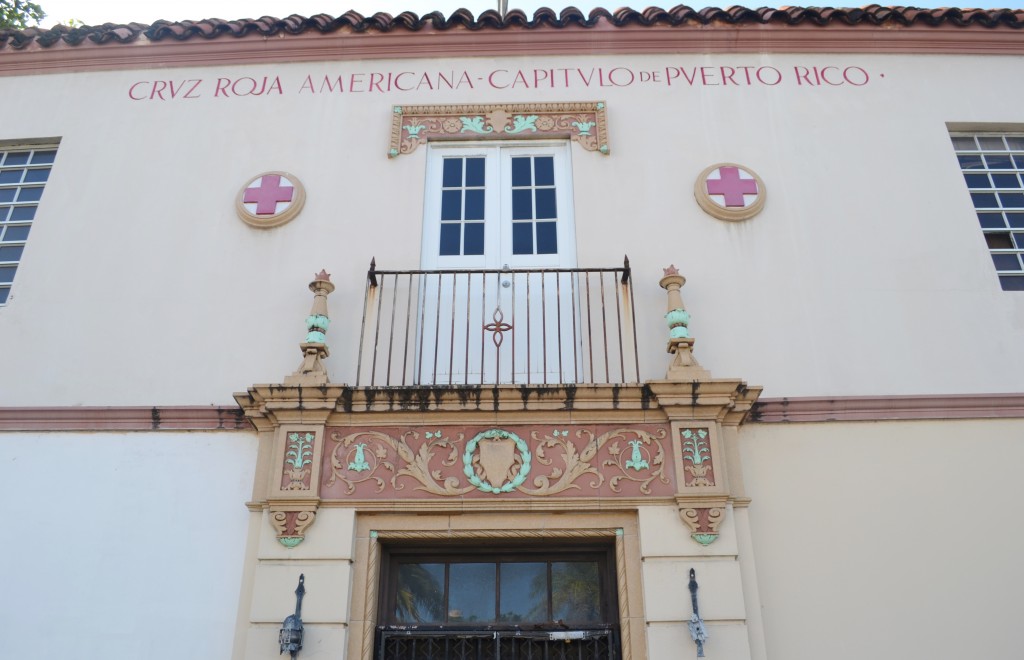
The American Red Cross of San Juan
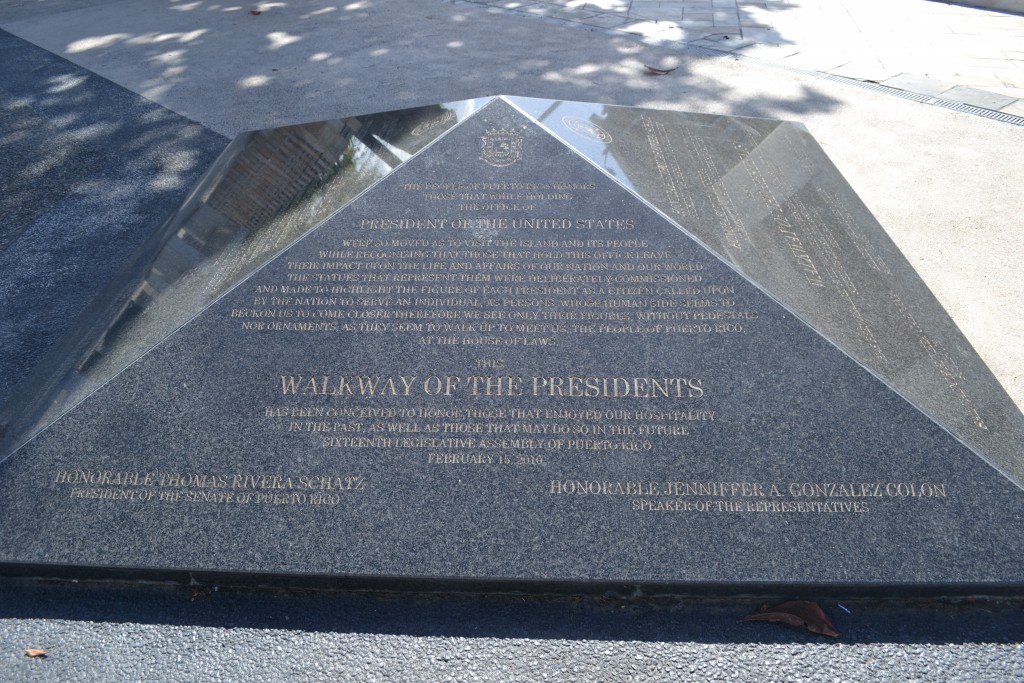
Walkway of the Presidents
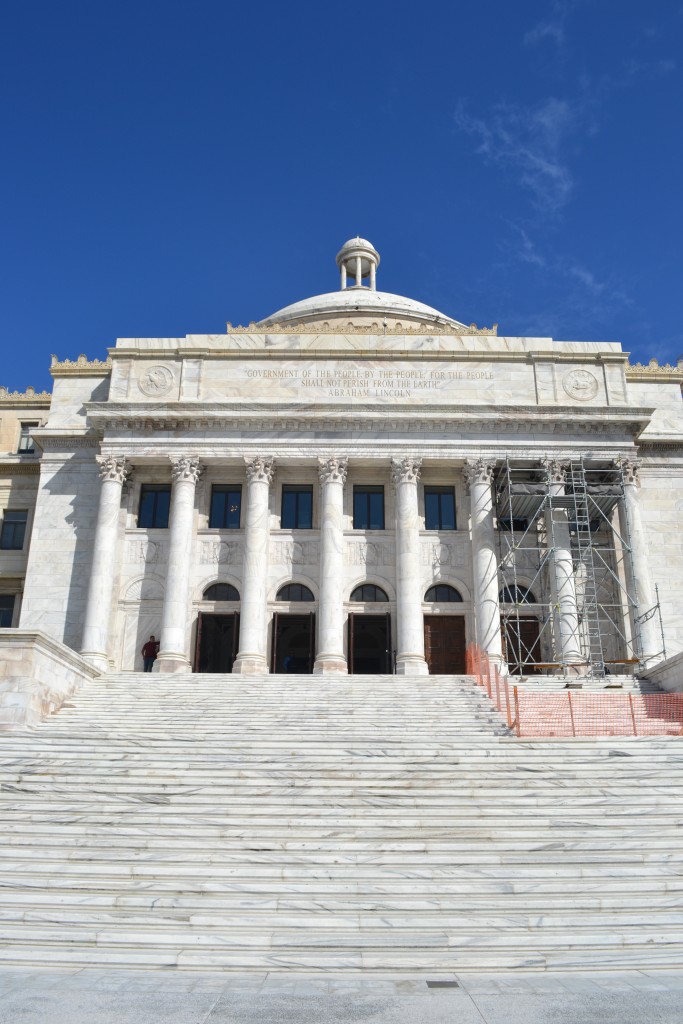
The Capitol Building in San Juan
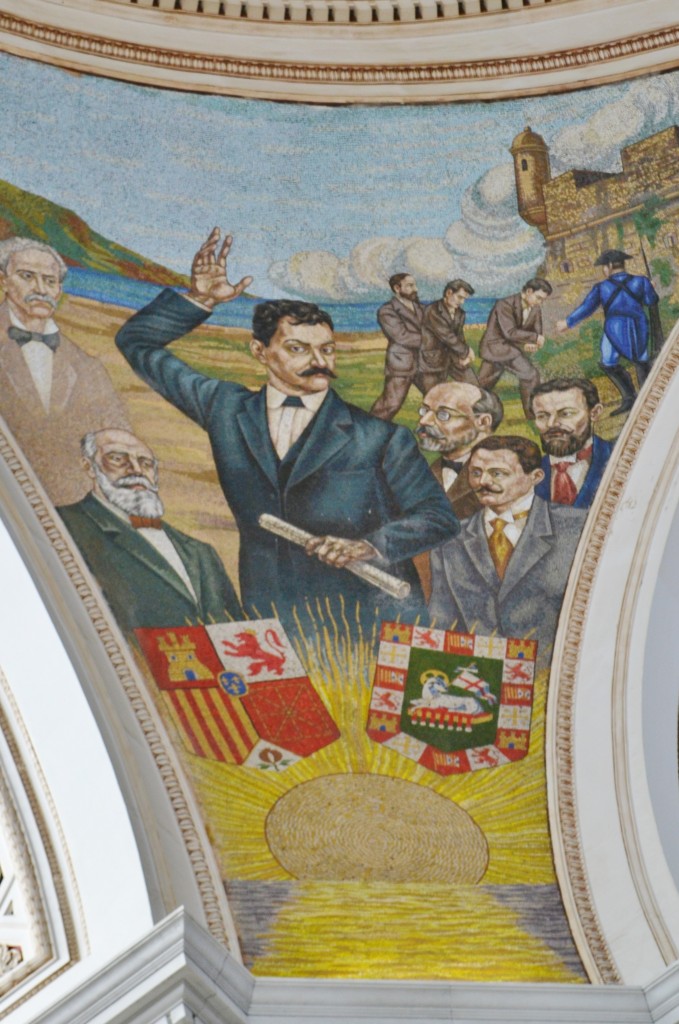
Ending the Spanish-American War
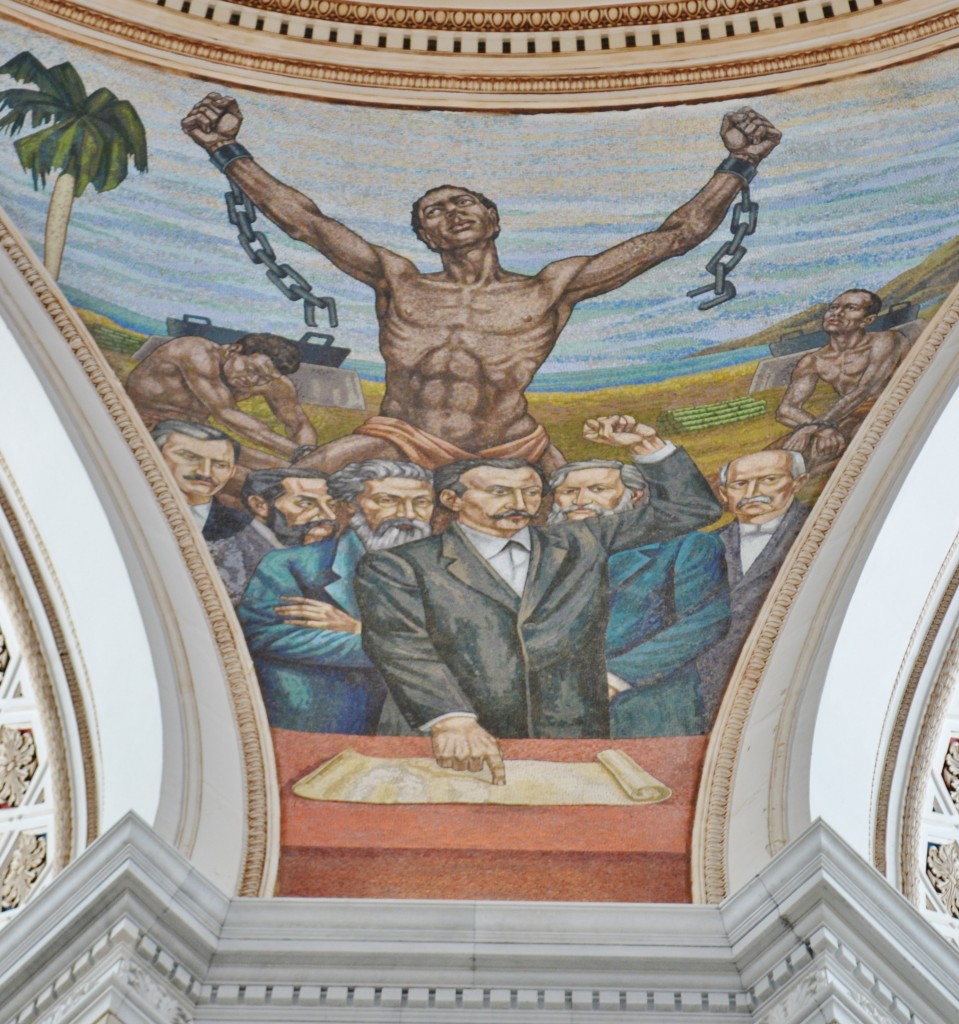
The End of Slavery in Puerto Rico
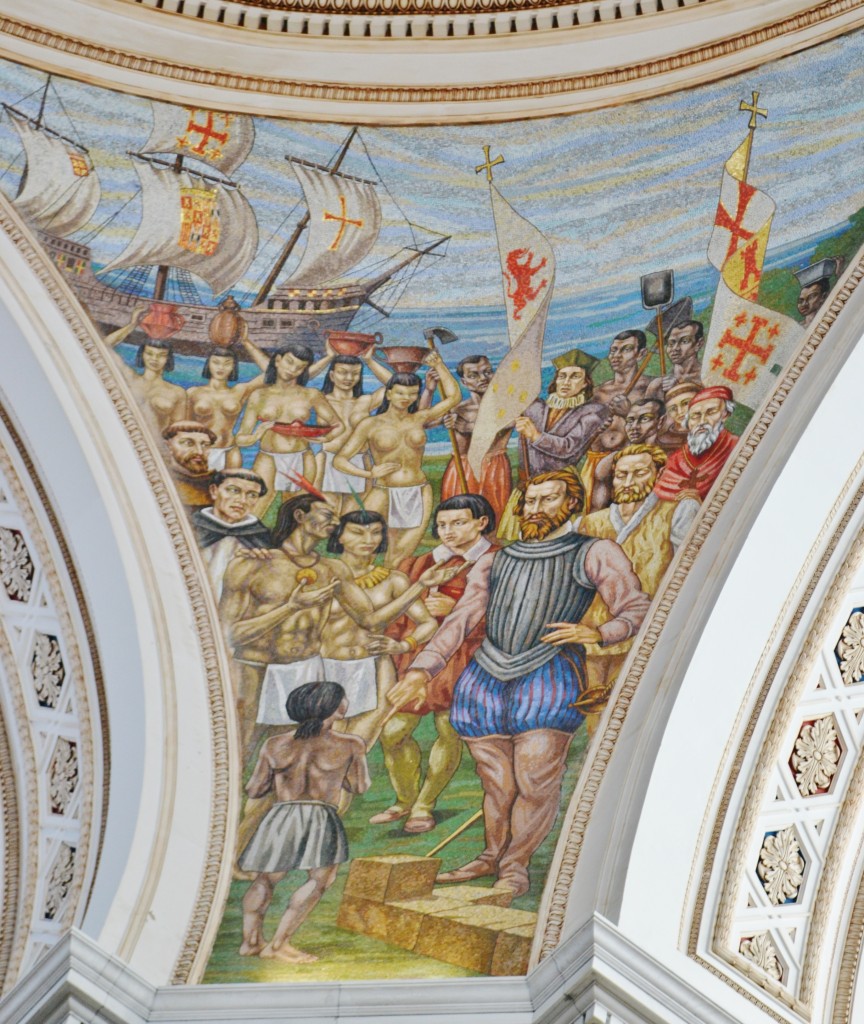
First Encounter with the Tainos
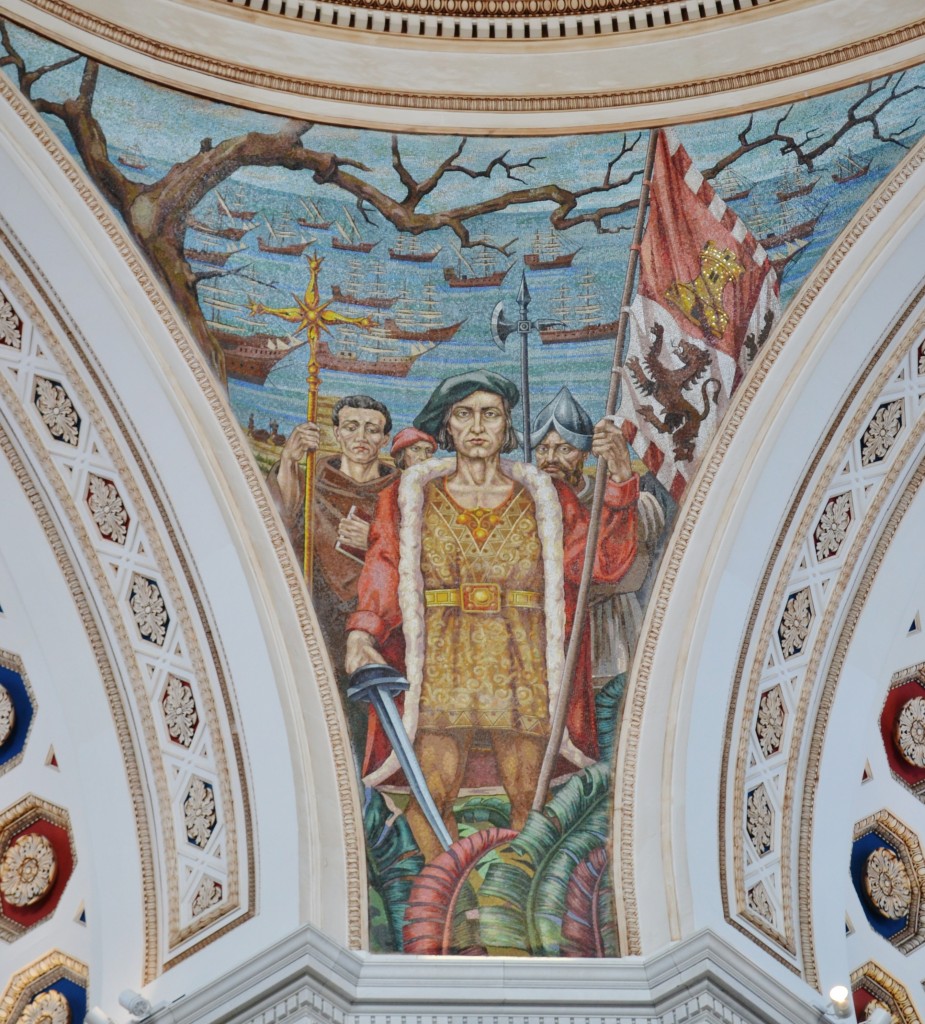
Christopher Columbus Arriving in Puerto Rico
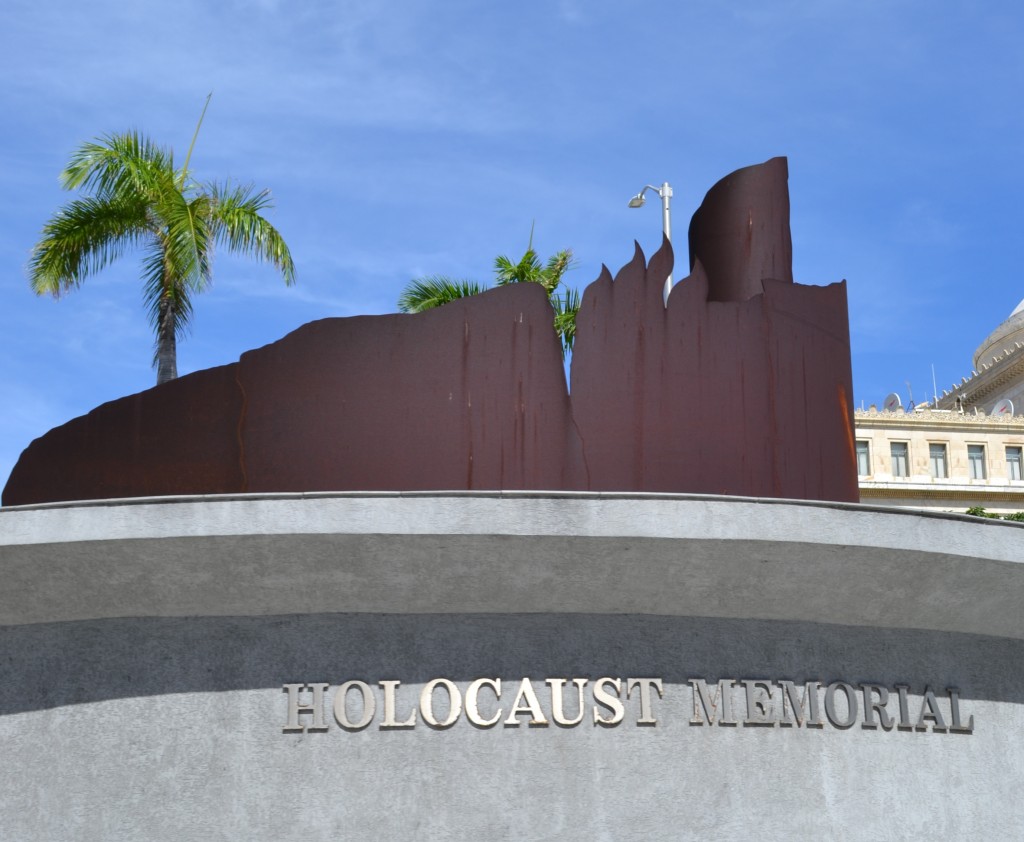
The Holocaust Memorial, San Juan